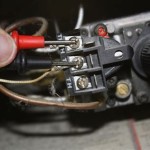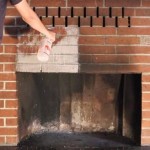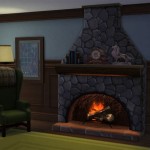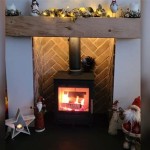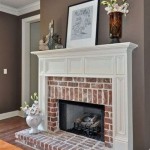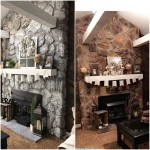Enhancing Brick Fireplaces with Stone Overlay: A Comprehensive Guide
Brick fireplaces, while traditional and often charming, may not always align with evolving aesthetic preferences. Homeowners seeking to modernize or personalize their living spaces often explore options for updating these existing features. One increasingly popular method involves applying a stone overlay to the brick fireplace. This approach offers numerous advantages, allowing for a significant transformation in appearance without the extensive demolition and reconstruction associated with complete fireplace replacement.
The process of applying a stone overlay involves adhering thin stone veneers or manufactured stone products directly onto the existing brick surface. This technique preserves the structural integrity of the fireplace while providing a completely new visual aesthetic. It can significantly enhance the ambiance of a room, allowing homeowners to seamlessly integrate the fireplace into their overall interior design scheme. Choosing the right type of stone, preparing the brick surface thoroughly, and employing proper installation techniques are crucial for achieving a long-lasting and visually appealing result.
Understanding the Advantages of Stone Overlay
Several compelling reasons drive the decision to utilize stone overlays on brick fireplaces. These benefits encompass both aesthetic and practical considerations, making it an attractive option for homeowners seeking a fireplace renovation.
Aesthetic Transformation: The primary advantage of a stone overlay is its ability to dramatically alter the appearance of a brick fireplace. Brick, while classic, can sometimes appear dated or clash with contemporary design styles. Stone overlays offer a vast array of textures, colors, and patterns, allowing homeowners to select a finish that perfectly complements their interior décor. From rustic fieldstone to sleek, modern ledgestone, the possibilities are virtually limitless. This flexibility allows for a tailored design that reflects individual tastes and preferences, thereby enhancing the overall aesthetic appeal of the room.
Cost-Effectiveness: Compared to the expense of completely removing and rebuilding a fireplace, applying a stone overlay is a significantly more cost-effective solution. Demolition involves labor costs, disposal fees, and the potential for unforeseen structural repairs. A stone overlay minimizes these expenses, as it utilizes the existing brickwork as a foundation. While material costs for the stone veneer and adhesive are involved, the overall project remains budget-friendly, making it an accessible option for a wider range of homeowners.
Reduced Disruption: The installation of a stone overlay is a less disruptive process than a full fireplace replacement. Demolition generates dust, noise, and debris, which can inconvenience occupants and require extensive cleanup. Because the existing brick is not removed, applying a stone overlay minimizes these disturbances. The installation process is generally quicker and less intrusive, allowing homeowners to enjoy their updated fireplace in a shorter timeframe.
Preservation of Structural Integrity: Applying a stone overlay preserves the existing structural integrity of the fireplace. The brickwork serves as a solid foundation for the stone veneer, ensuring stability and longevity. This is particularly important for load-bearing fireplaces that contribute to the overall structural support of the chimney. By avoiding demolition, the risk of compromising the building's structure is significantly reduced.
Increased Home Value: A well-executed stone overlay can significantly enhance the value of a home. An updated fireplace is an attractive feature for potential buyers, as it adds to the overall aesthetic appeal and perceived value of the property. The transformation from a dated brick fireplace to a stylish stone fireplace can be a worthwhile investment that yields a positive return when selling the home.
Selecting the Right Stone for Your Fireplace Overlay
Choosing the appropriate stone type is crucial for achieving the desired aesthetic and ensuring the durability of the overlay. Several options are available, each with its unique characteristics and suitability for different design styles.
Natural Stone Veneer: Natural stone veneer is a thin layer of real stone that is cut and prepared for installation. It offers the authentic look and feel of natural stone without the weight and cost of full-thickness stones. Common types of natural stone veneer include granite, limestone, slate, and fieldstone. Each type offers a distinct texture and color palette. Natural stone veneer is durable and weather-resistant, making it a long-lasting option for fireplace overlays. However, it can be more expensive than manufactured stone and may require sealing to prevent staining.
Manufactured Stone Veneer: Manufactured stone veneer, also known as cultured stone, is a lightweight concrete product that is designed to replicate the appearance of natural stone. It is available in a wide range of styles, colors, and textures, offering greater design flexibility than natural stone. Manufactured stone veneer is typically less expensive than natural stone and easier to install due to its lighter weight and uniform shape. It is also more consistent in color and texture, which can be advantageous for achieving a specific aesthetic. While durable, manufactured stone may not have the same longevity as natural stone and may be susceptible to fading over time.
Ledgestone: Ledgestone is a type of stone veneer characterized by its stacked, linear appearance. It creates a rustic and textured look that is well-suited for both traditional and contemporary designs. Ledgestone is available in both natural and manufactured options, offering a range of colors and textures. Its unique profile adds depth and dimension to the fireplace, creating a focal point in the room.
Considerations for Stone Selection: When choosing a stone type, consider the following factors: the overall design style of the room, the desired color palette, the budget, and the ease of installation. It is also important to ensure that the chosen stone is compatible with the existing brick surface and can withstand the heat generated by the fireplace. Consulting with a professional stone supplier or contractor can provide valuable insights and guidance in selecting the right stone for the project.
Installation Process and Key Considerations
The installation process for a stone overlay involves several steps, from preparing the brick surface to applying the stone veneer. Proper preparation and installation techniques are essential for achieving a durable and aesthetically pleasing result.
Surface Preparation: Before applying the stone veneer, the brick surface must be thoroughly cleaned and prepared. This involves removing any loose or crumbling mortar, dirt, and debris. A wire brush and a masonry chisel can be used to remove loose material. The surface should then be washed with a mixture of water and detergent to remove any grease or oil. A bonding agent should be applied to the brick surface to improve adhesion. This typically involves applying a thin coat of a specialized masonry adhesive that creates a strong bond between the brick and the stone veneer.
Stone Cutting and Fitting: Stone veneers often require cutting and fitting to create a seamless and visually appealing finish. A wet saw with a diamond blade is typically used to cut the stone to the desired size and shape. It is important to wear safety glasses and gloves when using a wet saw. The stone should be dry-fitted before applying adhesive to ensure a proper fit and alignment. This involves arranging the stones on the floor or a flat surface to determine the optimal layout and identify any necessary cuts or adjustments.
Adhesive Application and Stone Placement: A high-quality masonry adhesive is essential for securing the stone veneer to the brick surface. The adhesive should be applied evenly to the back of each stone using a notched trowel. The stone is then pressed firmly onto the prepared brick surface, ensuring proper alignment and spacing. A level can be used to ensure that the stones are installed straight and level. Excess adhesive should be removed immediately with a damp cloth or sponge. It is important to allow the adhesive to cure completely before using the fireplace. The manufacturer's instructions should be followed regarding curing time.
Grouting (Optional): Depending on the desired aesthetic, the stone veneer may be grouted to fill the joints between the stones. Grouting provides a more finished look and can enhance the durability of the overlay. A flexible grout specifically designed for stone veneer should be used. The grout is applied using a grout bag or float, ensuring that all joints are filled completely. Excess grout should be removed immediately with a damp sponge.
Sealing (Optional): Sealing the stone veneer can provide additional protection against staining, moisture, and UV damage. A penetrating sealer specifically designed for stone should be used. The sealer is applied according to the manufacturer's instructions. Sealing is particularly recommended for natural stone veneers, which can be more porous and susceptible to staining.
Professional Installation: While it is possible for experienced DIYers to install a stone overlay, it is often recommended to hire a professional contractor. A professional contractor has the expertise and equipment to ensure a proper installation. They can also provide valuable advice on stone selection, design, and maintenance. Hiring a professional can ensure a long-lasting and visually appealing result.

Stone Veneer Over A Brick Fireplace Updates The Look

Pin By Tarra Wills Efkarpidis On For The Home Brick Fireplace Remodel Stone

Stone Veneer Over A Brick Fireplace Updates The Look

Installing Stone Veneer Over A Brick Fireplace Grand River

Chicago Stone Veneer Manufactured Siding Brick Fireplace Makeover

Stone Veneer Over A Brick Fireplace Updates The Look

Transform Your Home Stone Veneer Over Brick Fireplace Guide

Refacing A Fireplace With Stone Veneer Horizon

How To Diy A Stacked Stone Feature Over Existing Brick

7 Popular Stone Veneer Fireplace Design Trends Mason S Mark
Related Posts

